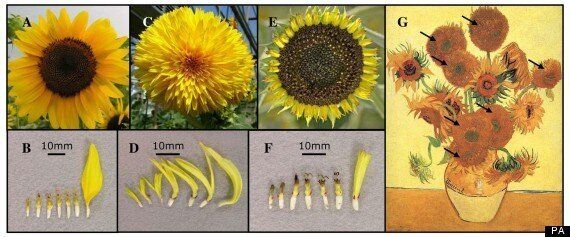Vincent van Gogh's famous sunflower paintings display a striking feature more of interest to scientists than art aficionados, it has been revealed.
Among the yellow blooms whose bright colours have delighted art lovers for more than a century are distinctive mutant double flowers.
The floral arrangement would not have puzzled a post-impressionist artist, but has been a mystery to scientists.
Researchers have now traced the gene responsible for the mutation.
Professor John Burke, from the University of Georgia Franklin College of Arts and Sciences in the US, said: "In addition to being of interest from a historical perspective, this finding gives us insight into the molecular basis of an economically important trait.
"You often see ornamental varieties similar to the ones van Gogh painted growing in people's gardens or used for cut flowers, and there is a major market for them."

Most sunflowers have a composite head consisting of hundreds of dark seed-producing "disc florets" at their centre surrounded by an outer whorl of larger petal-bearing yellow florets.
The double-flowered varieties depicted by van Gogh have multiple bands of yellow florets and a much smaller number of inner disc florets.
Prof Burke's team found that double-flowered sunflowers all have the same genetic mutation affecting a floret on-off switch. This causes instructions for making the outer florets to be turned on in parts of the plant that would normally produce the inner disc florets.
A second sunflower mutant with "tubular" florets was also found to have a disrupted version of the HaCYC2c gene.
The research is reported in the online journal Public Library of Science Genetics.